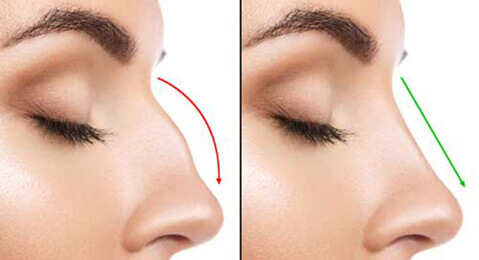
menu


Botox is an injectable treatment that helps diminish the appearance of facial lines and wrinkles. Botox injections work by stopping the muscles in the face from contracting, as contracting muscles are responsible for the appearance of facial lines.
Botox injections do not require surgery, and can be performed at Specialty Care ENT. The procedure is quick and there is typically minimal discomfort.
Before the procedure, you’ll receive a topical anesthetic on the area you’re receiving the injection. Botox is injected using a syringe into the area being treated.
Treatments last anywhere from one to four months. Repeat treatments can be beneficial, though, both to your appearance and for your finances.
Botox is suitable for older adults who are in good health and looking to treat frown lines, forehead lines, or crow’s feet. Candidates should note that Botox is not a permanent solution. The body will naturally absorb and process over time, however, repeat injections can keep the face looking smooth!
Buccal fat removal is a procedure that makes your cheeks look thinner. The fat under the cheek is called the buccal fat pad and removing it can make a person’s face look slimmer.
Like most cosmetic fat removal procedures, buccal fat removal is for healthy patients who are not overweight. Sometimes, people naturally have more prominent cheeks.
Full cheeks can be desirable and give a person a youthful appearance. However, some people may feel that their cheeks are too large, making buccal fat removal an excellent way to reduce their size. The procedure is not suitable for you if you have a naturally thin or narrow face.
Buccal fat removal is an outpatient procedure usually performed using general anesthesia. During the procedure, your surgeon will create any incisions inside of the cheeks.
This ensures that any scarring that occurs will be hidden inside the mouth. In addition, it’s easy to remove the buccal fat pads through the incision. Often, the sutures used to close these incisions are absorbable, so they’ll dissolve naturally in the mouth after the incisions heal.
The buccal fat recovery process only takes a few days. Most patients can resume their normal day-to-day activities within a day after the procedure.
However, you will need to stick to a liquid or soft food diet for a week. You’ll also need to use a prescribed mouthwash to keep your incisions from becoming infected.
The dorsal hump is a natural hump or bump on the nose that is composed of excess cartilage and bone. Some people seek out this procedure because they are unhappy with the shape of their nose with the dorsal hump. A dorsal hump reduction is a cosmetic procedure that reduces or eliminates the dorsal hump.
A dorsal hump (also called an aquiline nose, Roman nose, or hook nose) can give you a very distinct appearance. However, for those unhappy with their nose shape, a dorsal hump reduction may be the right option. We will discuss the best options with you on how to achieve your desired nose shape.
A dorsal hump reduction is typically an outpatient procedure, and patients are given general anesthesia to put them to sleep. The procedure can be performed in several ways, depending on both the surgeon and the patient.
Surgeons can remove excess cartilage and bone through incisions inside the nose, but sometimes an incision is needed outside the nose. This is called an open rhinoplasty. However, scarring is still minimal, and this more open technique is usually the best way to reduce a more prominent dorsal hump.
A fat transfer is a procedure where fat is removed from one part of the body to smooth out grooves and irregularities on another part of the body. For example, fat transfers are commonly used to smooth out facial features.
Buccal fat removal can be used in a variety of ways. On the face, it can fill in grooves around the nose and mouth and below the eyes. It can also help fill in gaunt cheeks.
Sometimes, it can function as a lip filler. If you’re in good health and are dissatisfied with gaunt facial features or want a lip enhancement, a fat transfer may be a good option.
A fat transfer is usually performed as an outpatient procedure, but it can be an inpatient procedure. It’s typically performed with general anesthesia and can take as little as an hour to complete.
The surgeon will take fat from the thigh or abdomen using tiny incisions in order to minimize scarring. They then remove fat in small amounts using liposuction.
After removing the fat, it’s processed, removing impurities from the fat through filtration or a centrifuge. The processed fat is then carefully injected into the transfer area in minimal amounts.
Your surgeon may also massage the area where they’ve transferred the fat to smooth it out. The transfer area usually doesn’t need any bandaging, but the donor area requires sutures to close the small incisions. Full recovery can take anywhere from one to three weeks, depending on how extensive the transfer is.

Filler is an artificial dermal filler. It’s made of a gel-like material injected into the skin to enhance a patient’s facial appearance.
Fillers can smooth out gaunt cheeks, plump up lips, and soften creases around the eyes, nose, and mouth.
Filler is for anyone looking to smooth out their facial features or who wants lip enhancements. Most fillers are not a permanent treatment, as the substance will eventually dissolve into the body.
There are many kinds of fillers on the market. Unfortunately, not every filler is suited for the same area of the face.
Our medical professionals at Specialty Care ENT can help you navigate the different options to find the best filler that’s suited to your needs. Then, once you decide what kind of treatment to get, you can have it performed right at your doctor’s office.
First, a topical anesthetic will be applied to the treatment area. The filler is then carefully injected using a syringe. It’s important to note that some fillers last longer than others. Most last between 6-18 months.
Neck contouring refers to various procedures that may include liposuction, neck lift, and botox injections. These procedures sculpt the skin around the chin and neck.
Neck contouring is for anyone looking to remove excess fat or skin around their chin and neck. Neck contouring can also make the jawline appear more defined.
For younger patients, neck liposuction is recommended to remove excess fat. For patients over 50, a neck lift or Botox injections are better suited for treating sagging skin.
How Does a Neck Lift Work?
One of the most common neck contouring methods is a neck lift. If you’re seeking a neck lift in the Chicago area, as well as neck contouring, the experienced specialists at Chicago ENT can help.
A neck lift is sometimes called a cervicoplasty or a platysmaplasty. A cervicoplasty focuses on removing excess skin, where a platysmaplasty focuses on tightening loose neck muscles.
Both procedures are usually performed on an outpatient basis with general anesthesia. First, your surgeon will make small incisions behind the ear or under the chin to hide any scarring.
Then, depending on the kind of procedure, they’ll either remove tissue or tighten the neck muscles before closing the incisions. Recovery typically takes a few weeks, but it can vary from person to person.
Neck liposuction is a technique used to remove excess fat from the neck. Liposuction can remove fat from all over the body, but neck liposuction is common to tackle excess fat, specifically around the chin and neck.
Neck Liposuction is performed using general anesthesia, but it can also be performed only using local anesthetic. It is a relatively quick, outpatient procedure.
Your surgeon starts by making a small incision either behind the ears, or under the chin to hide and scarring. Then, they use a device called a liposuction cannula that operates like a vacuum to suck out the fat in the controlled area.
After the procedure, patients are given a chin strap that they need to wear for a few days. Most are back to normal activities after a week or two.
Neck Liposuction is for patients looking to remove excess fat deposits, and are at a healthy weight. It should not be used as a method of weight loss. It is better suited for adults 20 to 50 years old.
If you’re self-conscious about a double chin or fat around the neck, undergoing neck liposuction can help you achieve your ideal appearance. Liposuction cannot treat sagging skin. But younger patients also tend to heal better from liposuction, minimizing the risk for irregularities after the procedure.
Otoplasty is a procedure that changes the shape or positioning of the ears. It can reduce the size of the ears and make them protrude less.
Otoplasty is best for patients who are healthy and children over the age of five.
Otoplasty may be right for patients who are unsatisfied with the size or position of their ears. Similarly, if your child is unsatisfied with their ears, otoplasty may be a good option.
It’s important to note that otoplasties should never be performed on a child who does not understand what having the procedure means, or who objects to having the procedure done.
An otoplasty is often performed as an outpatient procedure. However, your surgeon may also perform it as an inpatient procedure.
You’ll receive general anesthesia or an IV sedative before the otoplasty begins. Then, your surgeon makes a tiny incision on the back of the ear, so any scarring is hidden.
There are some cases where your surgeon may need to make the incision in the front of the ear. If that’s the case, the incision is made along the natural fold to reduce the appearance of scarring.
Your surgeon will then remove and reshape the cartilage of the ear. Permanent sutures are used to hold the reshaped cartilage to retain the shape of the ear. The incisions are closed with standard, removable sutures.

A rhinoplasty is a cosmetic procedure that changes the appearance of the nose. Sometimes, when someone gets a rhinoplasty, it can cause complications.
These complications can be cosmetic, but they can also cause deformities that make it hard to breathe. In these cases, a revision rhinoplasty can often fix the appearance and function of the nose.
Anyone can get a rhinoplasty. However, revision rhinoplasty is specifically for people who have had a rhinoplasty and are unsatisfied with the results.
Unfortunately, because rhinoplasty is such a complicated procedure, it isn’t uncommon for an inexperienced surgeon or practice to leave patients with less-than-perfect outcomes. But if you live in Chicago and have had a rhinoplasty that you’re unhappy with, Chicago ENT can help.
Our experienced specialists are experts in revision rhinoplasties and can help you with any cosmetic concerns, as well as trouble with breathing that your previous rhinoplasty may have caused.
Revision rhinoplasty is a procedure designed for the patient. Because each patient’s needs are unique, each revision surgery is also one-of-a-kind. But the general approach is the same for each patient.
First, your surgeon will put you under general anesthesia, so you won’t be awake for the procedure. Then, once you’re asleep, the surgeon will make small incisions on the inside of the nose.